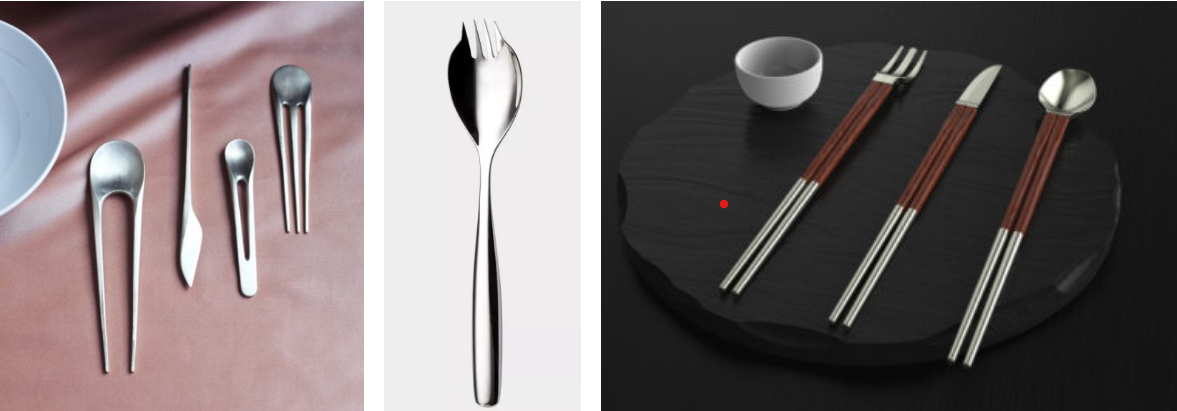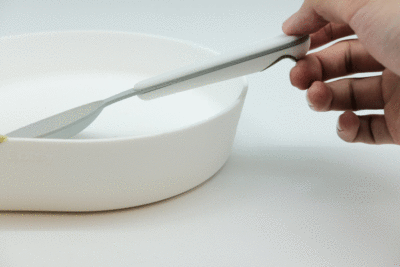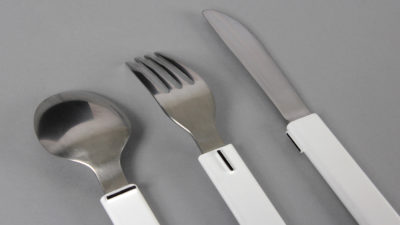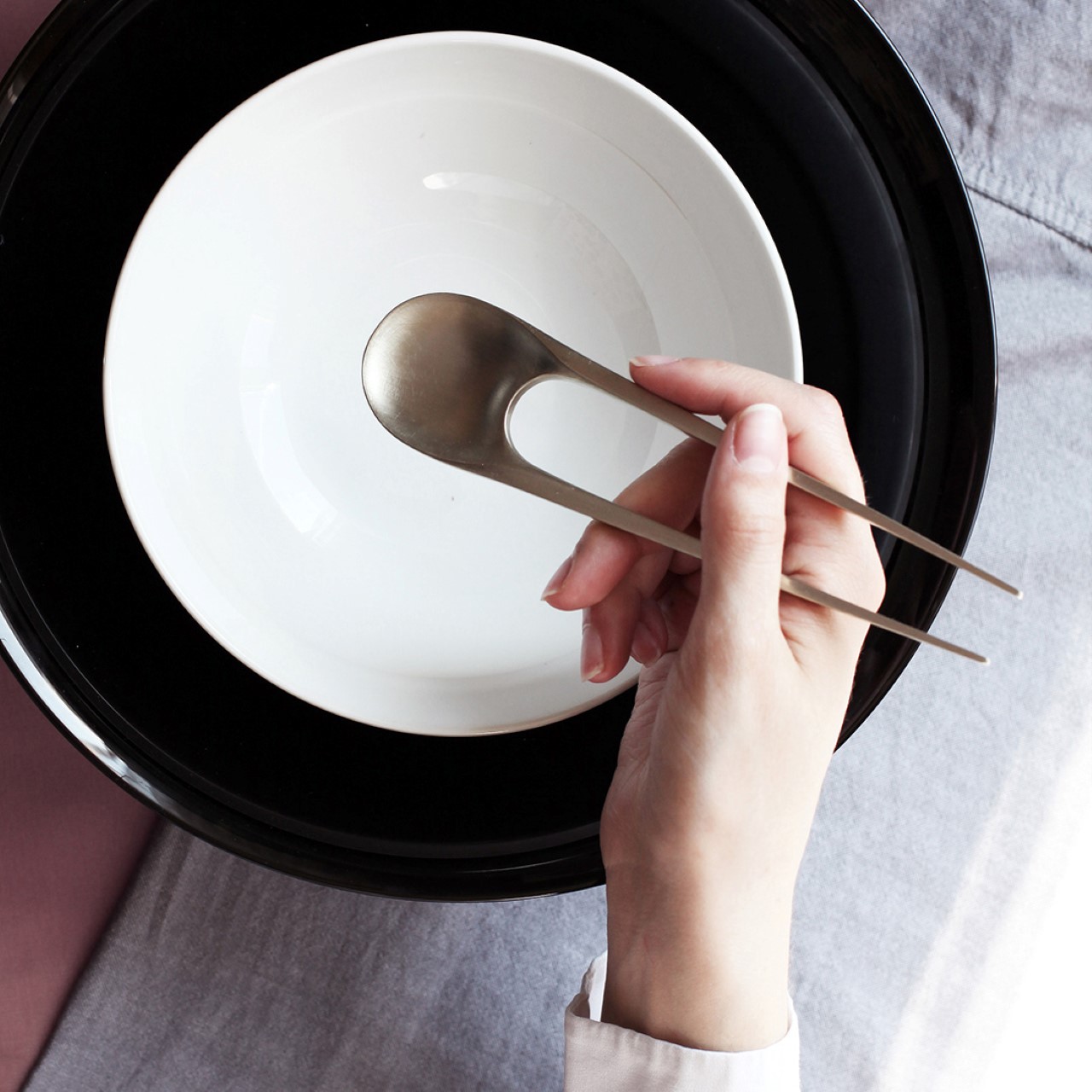Cutlery is always the same, but was it always like this? Will we continue to use the same utensils in the same way in the future?
We love cutlery, even the this blog’s logo has three of them (have you noticed?). I’ve wanted to talk about this for a long time, 5 years to be exact. We’ve already talked about the most creative knives here, aroma release fork here and even the first options of edible cutlery here.
If we think that in the future we will only eat pills, maybe we don’t even need cutlery anymore. If we keep eating, even lab food, we need to handle it without getting our hands dirty, contaminating the food, or burning ourselves with hot food.

To start the conversation, since when do we use cutlery?
What started out as a tool, gradually became something that only rich people used (ostentation was already present in our history!). Knife is the oldest, because it was essential in hunting. Second cutlery was the spoon, the first models were made of clay, nut shells or sea shells. Fork is the latest, the first models had two teeth and were used to serve meat.
Cutlery as we know it today became popular from the 18th century onwards and gained variations. There is a knife for meat, for fish, one for fruit and even for butter. The same can be said of the spoon and fork, there are so many that it is difficult to find someone who knows how to use them all.
Exploring formats
We’ve already talked about the “perfect” spoon for stirring coffee here and, curiously, there seems to be an ideal cutlery for everything, including for stirring ice cream:

The invention comes from a Japanese man who wanted to recreate machine ice cream for his parents to taste. Since machines are expensive, he came up with a cheaper solution.
The ‘Rething‘ cutlery is a reinterpretation of the traditional, each utensil can be used in different ways depending on which side it is held. The coolest thing is that they accommodate different cultures so that diners wear whatever is most comfortable for them. Another combination of cutlery is the spork, a combination of fork and spoon from the Danish brand Hardanger. There is also One Plus Three, European Product Design Award-winning project, in which each cutlery can be separated to be used as Western cutlery or chopsticks, another multicultural solution.

‘Rething’ collection, Spork (the spoon-fork) and One Plus Three collection
Including through cutlery
The evolution of a society implies not only serving the majority, but being inclusive and serving everyone. Have you ever thought about how the visually impaired differentiate their utensils? The Eatsy collection (left) is simple and multifunctional, made to not slip into the plate. Simon Kinneir‘s Leaven Range cutlery (right) is adjusted for a tactile experience of the right cutlery in the right position.


Disposable vs durable

Eco-Warriors (left): Eco-friendly cutlery made of pure titanium, to last a lifetime. More convenient is GoSun Flatware (right), which in addition to being reusable, takes up the space of a credit card, ideal for keeping in your wallet.
Upcycled cutlery
Millions of tons of food are wasted in the world and, at the same time, millions of disposables are produced. Studio Barbara Gollackner created disposable utensils from food waste from industries and restaurants to solve the problem. The dried or cooked waste is mixed with mushrooms, forming a smooth paste, which is the raw material for the 3D printer.
Another example of upcycling is that of razor manufacturer Albatross, which transforms the steel from the blades used by customers into cutlery.

Disposable utensils by Barbara Gollakner (left) and upcycled tableware by Albatross Take Back Ware Program
We should rethink cutlery without having to reinvent the wheel, thinking of more inclusive solutions, with less environmental impact and accessible to all. And about that old prediction that in the future we will eat pills, it is possible but unlikely. Eating is more than simply ingesting nutrients, it has a social, educational and cultural dimension. As long as we have the pleasure of sharing a meal, we have an excellent reason to continue to use cutlery now and in the future.
Sources: Hardanger Bestikk, Deutsches Historisches Museum, Yanko Design, Dezeen, Yanko Design, Fine Dining Lovers, Mold, Oddity Central, Yanko Design



COMMENTS